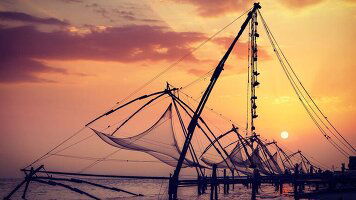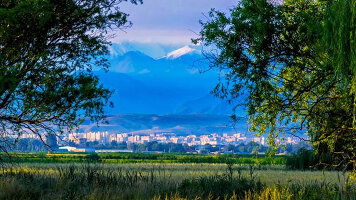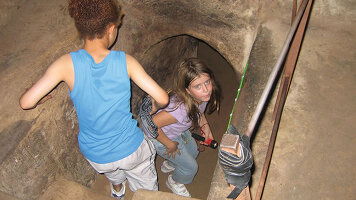Overview
Itinerary
Our tour starts today in Tokyo, Japan's ultra-modern capital. A sprawling metropolis, Tokyo is one of the world's most populous cities and a dazzling blend of traditional culture and all things new.
For those arriving in time, our tour leader plans to meet you in the hotel reception at 6.30pm for a welcome meeting. If some of the group are arriving on later flights, the main introductory briefing will take place on the morning of Day 2 with everybody present. After the meeting, we'll have dinner (included) at a nearby local restaurant where you'll have the chance to try 'izakaya' style Japanese cuisine.
There are no other activities planned today, so you're free to arrive in Tokyo at any time. If you'd like an airport transfer today, you'll need to arrive into Haneda Airport (HND) or Narita Airport (NRT). The city centre is around an hour away from Haneda and an hour and a half from Narita.
Should you miss the welcome meeting, your tour leader will inform you of any essential information as soon as you catch up. The Tour Leader will issue each client with a Suica transport card either today or tomorrow morning, that is pre-loaded to cover your included sightseeing public transport journeys.
Please note, while our itinerary gives us a full day in Japan's capital, there's a lot to pack in. If you really want to get to grips with Tokyo's sites, we recommend adding additional nights to your trip pre-tour.
Japanese hotels have strict rules regarding check in and all customers are required to wait until 3 PM for room access. You will be able to store your luggage while waiting but if you require an early check in, then you should request this at the time of booking. We do not guarantee this will be possible and depending on availability an extra fee will be charged. Stay: The Kanzashi Tokyo Asakusa Hotel (or similar) (Comfortable) (D)
Over one-quarter of the Japanese population lives within a 50-kilometre/31-mile radius of the centre of Tokyo, making it the most populous metropolitan area in the world. The result is a bustling and exciting city - an economic powerhouse of Asia. However, scratching its neon-clad surface reveals a city bursting with history and tradition. A morning stroll to Tokyo's oldest temple, Sensoji, will introduce us to Tokyo's unique culture. We'll then board a boat for a short journey along the Sumida River. Gaining a totally different perspective of the city, we'll drift past high-rise apartments, secluded gardens and busy warehouses. Arriving in the heart of the city, we'll visit Hamarikyu Gardens.
The rest of the day is left free, and you might like to board a train to visit the Meiji shrine and Shinjuku area, where the latest electronic gadgets dazzle from glowing shopfronts. Stay: The Kanzashi Tokyo Asakusa Hotel (or similar) (Comfortable) (B)
No trip to Japan would be complete without a journey on a high-speed train and this morning we leave Tokyo and board the Shinkansen. Our main bags will be forwarded to Osaka today and we'll make do with an overnight bag for tonight. The bullet trains are known for their extremely punctual service, comfortable carriages, and lack of noise as you travel at speeds of up to 300 kilometres/186 miles per hour. Alighting at Nagano in the Japanese Alps, we'll make our way by private coach to Jigokudani Onsen, home to Japan's famous snow monkeys. Here the indigenous macaques descend from the hills to bathe and play in the hot springs, a unique behaviour not found anywhere else in the world. Despite their wintry moniker, the monkeys can be observed in and around the pool throughout the year (although sightings are more likely in colder months). Our walk to the spring takes 30 minutes along a pretty forest trail which is mostly flat with some steep stairs and narrow sections. Once at the spring, we'll spend around an hour observing the monkeys before returning along the same path.
Leaving Nagano behind, we'll head for Kanazawa, which until 150 years ago was the 4th largest city in Japan. The city has shunned mass industrialisation and retains its traditional charm with its winding back streets, delicate tea shops and the beautiful autumn maples and spring cherry blossoms of Kenrokuen Gardens. Once ruled by the Maeda Clan, one of the most powerful Samurai families in Japan, the city has several traditional samurai districts and, along with Kyoto, is one of Japan's cultural capitals. Stay: Hotel Amanek Kanazawa (or similar) (Comfortable) (B)
As the town was not targeted during World War II, much of Kanazawa consists of old buildings and gives a sense of what Japan was like in the 19th century. We'll spend some time wandering around the colourful stalls at the town's Omicho market, where fresh fish and crab are brought daily from the Sea of Japan along with vegetables from the surrounding countryside. The market is open but please note that some of the stalls are closed on a wednesday but it is still worth a visit. A great dish to try here is chirashi-zushi, which consists of scattered seasoned sushi rice topped with a variety of seafood, vegetables, and raw fish. We'll also visit Kenrokoen Gardens which took nearly two centuries to complete and translate from their original Japanese as the 'Garden of the Six Sublimities'.
This afternoon, we'll travel by train once more (a two-hour journey) to the city of Osaka. Japan's second city is famed for its modern architecture, buzzing nightlife and tasty street food. This evening your tour leader will take you on a walk around the Namba area, one of Osaka's most vibrant and interesting districts where miles of covered arcades criss-crossed by canals and rivers open up to back streets filled with history and small shops. We'll get to see the street food scene with local delicacies such as Takoyaki - also known as Octopus balls, Okonomiyaki - a type of savoury cabbage-based pancake filled with pretty much whatever you like, Kushikatsu - skewered meat and vegetables that are deep-fried, and ramen - pulled noodles served in a meat or fish-based broth, often flavoured with soy sauce or miso. For practical reasons we have included a sit down meal where you get the chance to try some of these specialties this evening. Stay: Karaksa Hotel Grande Shin-Osaka Tower (or similar) (Comfortable) (B/D)
Our main luggage will be forwarded to Kyoto today and we'll use our overnight bags again. A couple of morning train journeys take us to Hiroshima. This thought-provoking city was completely destroyed on the 6th of August 1945 as the target of the first atomic bomb to be used in wartime. Hiroshima has literally risen from the ashes and is now a thriving, friendly city. Travel around the city is easy, thanks to the colourful street trams, brought in all over Japan after the war.
Just off the coast of Hiroshima is the tiny island of Miyajima which we'll visit upon arrival today. The relaxed feel of this island is enhanced by the deer that roam freely through the streets. As you arrive on the ferry, you can take in the famous view of the floating torii gate. Considered to be one of the most iconic sights in Japan, these red gates appear to float on the water with the hills of the island forming a spectacular backdrop. If time permits - there are various hiking trails to explore and a cable car to the top of Mount Misen for great views. You might also like to take time to visit some of the island's many shrines before we take the ferry back to the mainland. Stay: MYSTAYS Hiroshima Peace Park (or similar) (Comfortable) (B)
First thing this morning, we'll have time to visit the Peace Memorial Park and the well-presented museum on the site of the 1945 A-bomb hypocentre. Whilst serving as poignant reminders of the nuclear holocaust, their overwhelming message is of hope that such horrors will never reoccur.
Later this morning, we'll make our way back to the train station for the journey to Kyoto, which takes around two hours. The imperial capital for more than 1,000 years, Kyoto has more than 2,000 temples and shrines, many set in perfectly manicured landscaped and tranquil gardens. We'll start exploring this fabulous city this afternoon with a visit to Nijo Castle. Built in 1603 as a Shogun palace, it's a great example of the sumptuous setting in which the Shogun would have held audiences with his samurai warriors. The extensive gardens and gates are impressive, but the real ingenuity of the castle is the nightingale floors, so called because they are designed to make a chirping noise when walked upon, thus making it impossible to sneak up on the castle's inhabitants.
The rest of the afternoon is left free to explore. You may choose to visit Ryoan-ji Temple with its beautiful Zen gardens and famous rock garden. The exact history of the gardens is unknown, but it's thought the temple was converted from an aristocrat's villa in 1450. Whilst in the gardens try testing out the theory that at least one of the rocks is hidden from every vantage point. Another possibility is the famous Golden Pavillion (Kinkaku-ji). The temple is a three-storey building with the top two tiers covered in gold leaf. Set in a lake, the building appears to float on the water and the reflections, coupled with the background of forest make it worthy of its place on many Japanese postcards. Stay: Miyako City Kintetsu Kyoto Station (or similar) (Comfortable) (B)
We'll spend today exploring more of Kyoto and visiting some of the city's many temples.
We'll start with a traditional tea ceremony and take time to explore Kyoto's charming streets, soaking up the unique atmosphere. Continuing to Nishiki covered food market there will be some free time to choose your lunch from an array of excellent local vendors. In the afternoon we will visit Kenninji, the oldest Zen temple in Kyoto constructed in 1202. Founded by the Buddhist monk who introduced both Zen Buddhism and tea cultivation to Japan upon returning from study trips to China. Our next stop is to visit Yasaka Pagoda - one of the most visible and recognisable landmarks in Higashiyama district and the last remnant of Hokanji Temple. Finally we take in the traditional Japanese street of Ninenzaka. We will end in the late afternoon and we recommend, if time permits, heading to Gion district to see geishas heading to appointments. Later this evening we enjoy our a final dinner where we can think back over our trip across wonderful Japan. Stay: Miyako City Kintetsu Kyoto Station (or similar) (Comfortable) (B/D)
The trip ends after breakfast at our hotel in Kyoto.
Kyoto is a wonderful city with so much to see and do. Please consider extending your stay when booking your trip with additional time here.
There are no activities planned today, so you're free to depart from Kyoto at any time. If your flight is departing later in the day, luggage storage facilities are available at our hotel. If you'd like an airport transfer today, you'll need to depart from Kansai International Airport (KIX), which is approximately one hour and thirty minutes by train, or Osaka International Airport (ITM) which takes around an hour by shuttle bus. Please note that you'll be required to walk a short distance from the hotel to the train station or bus collection point and that the transfer will be unescorted.
Please note, our itinerary allows for limited time in Kyoto, if you'd like to explore more of Japan's cultural capital, we recommend adding additional nights to your trip. (B)
Trip Inclusions
- An 8-day trip through beautiful Japan's highlights where modernity meets tradition
- An unforgettable journey from Tokyo's high rise neon to the peaceful temples of Kyoto
- Try street food in Osaka and look out for snow monkeys bathing in hot springs
- Full on paced trips are for travellers who like their holidays packed with activities and experiences, moving on quickly from place to place with lots of early starts and long, busy days. Some may find them tiring, but others get a buzz from packing their precious holiday-time as chock-a - block full of new experiences as possible.
- Accommodation, itinerary and inclusions subject to change.
- Price is for land, cruise and internal flights as specified. Flights not specified are not included
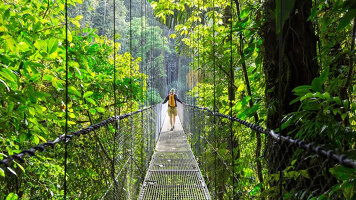
Launching in 1981, Explore Worldwide offer trips from over 130 countries - from classic small group tours. Read more
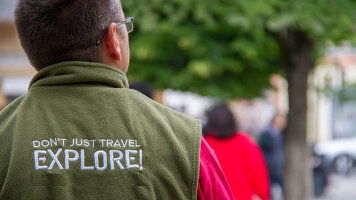
Explore's leaders are more than just your typical guide. They're your local expert are are passionate about sharing their expertise with you. Read more
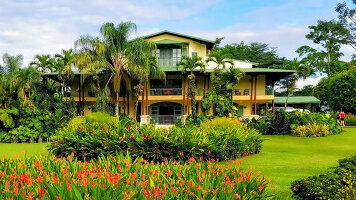
The places Explore stay are every bit as important as the sights they visit and the things you do. Read more
Trip Reviews (2) Most Recent 'Highlights of Japan' Reviews
Download Brochure
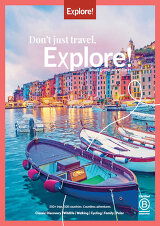
Explore Worldwide Small Group Adventures (2025-26)
Dates & Pricing
 USD
USD
A definite departure means minimum numbers have been reached for this departure to operate. Your Global Journeys Travel Advisor will check the availability of your departure date when you Inquire. Additional savings may apply. T&C’s apply.
Tour & cruises prices are per person. Prices shown have savings applied, are subject to availability and may be withdrawn at any time without notice. Pricing and trip details are correct at this point in time, however are subject to confirmation at the time of booking and are subject to change by Explore. For cruise itineraries, cabin images are sourced from the cruise-line and should be treated as indicative only. Cabin inclusions, upholsteries and room layout may differ to the image(s) shown depending on the ship selected and your sailing dates.





